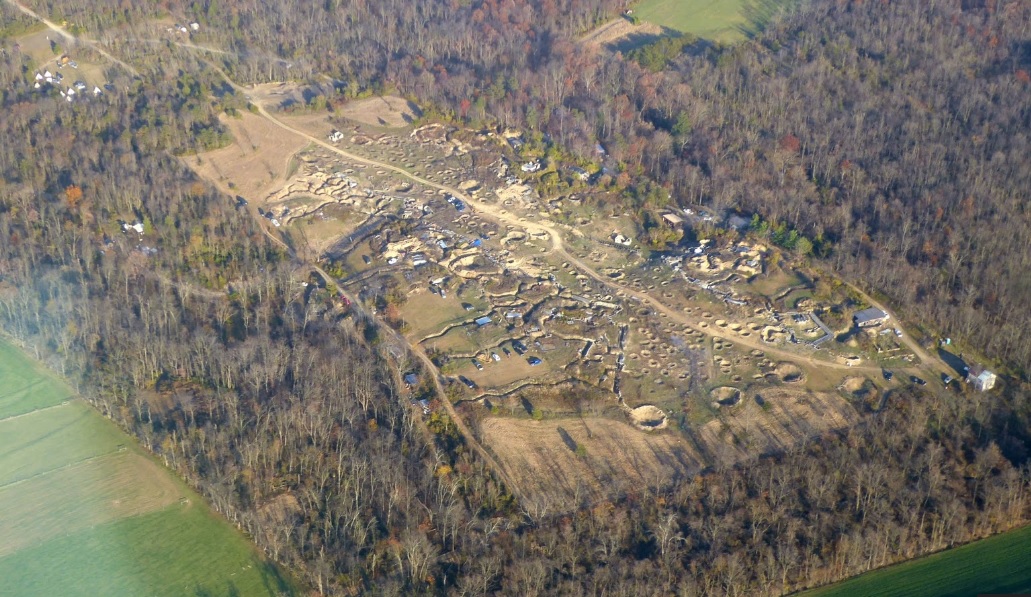Authenticity: Tactical Events at Newville, PA

Our main battle events occur twice annually at the GWA-owned Caesar Krauss Great War Memorial Site near Newville, PA. Here, on a 100 acre sight in south-central Pennsylvania, a portion of the Western Front has been authentically recreated as it would have appeared circa 1917-1918.
Unless otherwise stated, the events at Newville, PA represent a late-war scenario in order to allow for the significant American presence in the field. Thus, we are portraying the period of fall 1917 to fall 1918. The French infantryman had changed greatly since the first months of the war. Years of terrible, senseless slaughter, poor leadership, antiquated tactics and foolish strategy had beaten any illusions of glory on the battlefield out of the poilus. Following the disastrous Aisne offensive of April 1917, significant drops in morale occurred throughout the French army. Gone were the days of blind, unquestioning obedience, along with any notions of pomp and panache. Mutinies and lesser acts of "collective indiscipline" occurred from the spring of 1917 to the beginning of 1918. Generally, these incidents of insubordination were in reaction to orders that the men saw as senseless or lacking any real objective. Yet the French army never suffered a complete breakdown. Instead the men consciously resolved to finish the fight. In the fall of 1917, the French army carried out a number of smaller offensives that proved ultimately successful. Following the German spring offensives of 1918, the French army played a critical role in driving back the German forces. The tenacious fighting spirit of the poilu brought ultimate victory to the Allies.
The events at Newville, PA represent a 'quiet' sector for the reasons of lack of numbers, absence of artillery, proximity of the opposing lines. The first two factors are determined outside of the world we recreate. Because we lack the true strength of wartime forces, we cannot mount the large-scale assaults that would help define our sector as 'active.' Likewise, with a complete lack of artillery (excluding the mortars we use) to stage bombardments on any scale, we must assume again that the sector is quiet. The third factor is the proximity of the enemy's trenches to our own. In the war, such a circumstance as this proved to be either one extreme or another: either a very active, deadly sector or a relatively calm one. And as just determined by the first two factors, we cannot accurately portray the former. Thus, we must assume the latter -- a quiet sector. The combat operations conducted on such a front -- reconnaissance patrols, small and limited raids, and light shelling -- can be realistically recreated for the most part.
At Newville events, all unit members are expected to treat the "dangers" as though they were real, to remain constantly aware of the enemy’s fire and react accordingly. Most soldiers were not looking for a chance to die but to live. While the allure of an "over the top" assault for a reenactor is undeniable, the reality of trench warfare must be maintained first and foremost. The sense of mortality was very real to these men. The men we portray literally lived with death and witnessed first-hand the violence that could be inflicted onto flesh by steel and high-explosives. By 1917 few poilus were eager for combat. Their main interest was in staying alive and in one piece.
Therefore, when in the trenches during daylight, exposing one's head or any part of the body over the parapet is strongly discouraged. Needless bravado should also be avoided. When on the attack in No-Man's-Land, soldiers should be bounding between shell-holes, only exposing oneself for no more than 2-3 seconds. Moreover, once in a shell-hole, one should be taking cover and exposing one's head above the crater rim to watch the action. In short, only expose yourself when necessary. When taking a "hit", if you're dead, just lay there without talking until the action passes. If wounded, you should also act accordingly.





